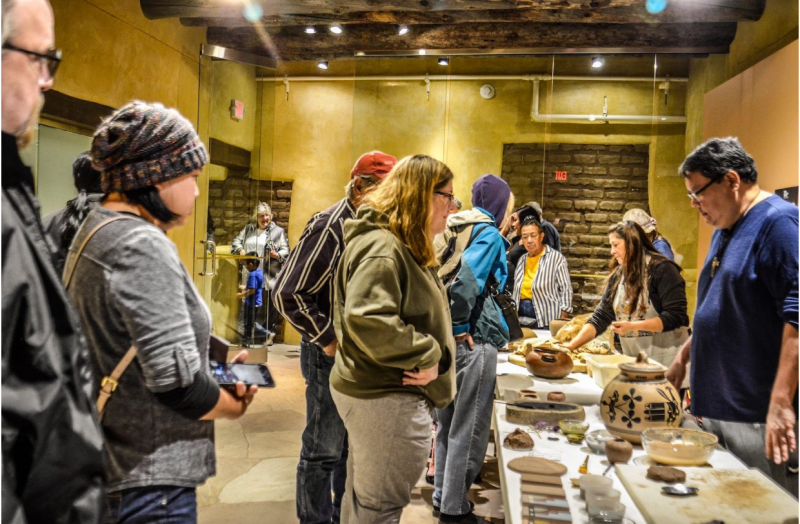A New Agreement Announced between Pueblo Communities and the National Museum of the American Indian

Opening day of “Di Wae Powa: They Came Back.” Image: hyperallergic.com. Photo there courtesy of Poeh Cultural Center in partnership with Smithsonian National Museum Of The American Indian.
Di Wae Powa: They Came Back, an exhibition featuring 100 pieces of Tewa pottery, is currently on view at the Poeh Cultural Center at the Pueblo of Pojoaque in New Mexico. The exhibition is the result of a partnership between the Smithsonian’s National Museum of the American Indian (NMAI) and Pueblo communities. In 2015, Pojoaque Pueblo’s then-governor George Rivera, lieutenant governor Joseph Talachy and the Pueblo’s Historic Preservation Officer Bruce Bernstein requested the return of the pots to their ancestral home. Discussions led to an agreement that allows a long-term loan of the Tewa, or Hopi-Tewa, pottery. The NMAI and Pueblo communities will operate as “co-stewards,” ensuring the works will be displayed at their original sites for an extended period with conservation guidance from the NMAI.
The Pueblo communities also emphasized the importance of allowing their people to learn about their ancestry through the objects. A “teaching collection” has been created for this purpose and local potters will study the pieces as they create their own works.
There are six Tewa-speaking Pueblo communities: the Nambé, Pojoaque, San Ildefonso, Ohkay Owingeh (formerly San Juan), and Tesuque, all of whom had a voice during the selection process among more than 500 pieces of Tewa pottery in the NMAI’s collection. The selected works are not ceremonial objects, nor are they subject to the Native American Graves Protection and Repatriation Act (NAGPRA).
For members of the Pueblo communities, the pieces are not mere objects. As Clarence Cruz of Ohkay Owingeh Pueblo puts it, “they are living, they do have a spirit, they are breathing as well. They’re our ancestors.” And they are going home.
Read more here.